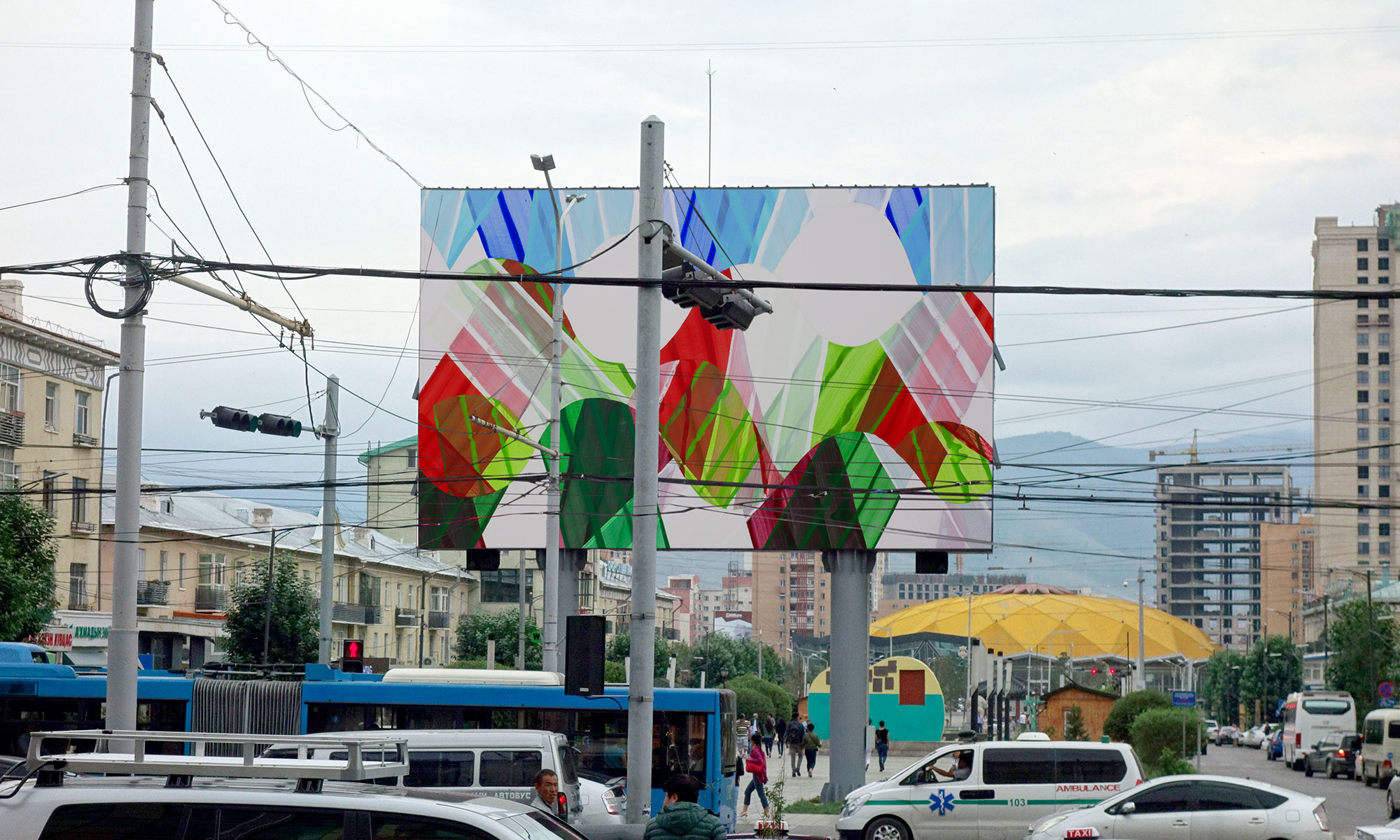Where the images come from
The question already arises: Where do these pulsating images come from? I have often asked myself that question when confronted with the paintings of Katja Brinkmann but conversely have always done my best to avoid putting the question to the artist. In the end, perhaps I dont really want to know, dont really want to close off this openness of seeing or the possibilities of attribution. Recognition and disturbing uncertainty alternate, and this moment of shaky equilibrium would be lost if the visual experience were all too smooth, with no resistance.
Doubtless there are spoors one can follow. Katja Brinkmanns paintings reveal monumental ovoid forms, snaky lines, spheres, planetary paths, the fiery sweep of a glowing meteorite. But that is just one possible reality we can imagine for ourselves. Another time they may recall the grandiose, shrill inhabited caves that Verner Panton produced during the 1960s and early 1970s, in acid colors and haptic materials: a formal and existential ambiance that in most cases could only be enjoyed with mixed feelings. This impression, in turn, does no more, perhaps, than set in motion a welcome retro nostalgia. If we refer to more recent traditions of painting, Katja Brinkmanns pictorial world peddles a germane spirit of contradiction that pushes colorfield painting into a psychedelic form.
A form that, conversely, could not be clearer, more focused, or more carefully thought out.
If we start from the beginning, then Katja Brinkmanns paintings, watercolors, and ink drawings are, strictly speaking, formal variations on a theme. An old theme, perhaps: the relationship of figure – ground. But this relationship is not unambiguously decipherable. The forms and their order deliberately obscure where the figure ends and the ground begins. Another theme: space in painting. For exactly the same reason this theme, too, is never unambiguously decipherable in Katja Brinkmanns work. And she pursues yet another theme: painting as an element that creates space not as an extension of architecture but as an integral part of it. There are, then, variations on several themes. In the large-format paintings these different variations are marvelously evident. Katja Brinkmann has literally inserted painting as a space-creating element into her collages. And in the Städtische Galerie Backnang (1999) she transforms this theme into action for the first time, in the form of a carpeted floor. Two years later, in the Galerie Helm/Reiswig, it is a four-part work that fills an entire wall, which redeems the promise already found in the collages. All of the questions reappear there: figure-ground, space in painting, painting itself as a space-creating element.
All this, however, describes only the formal and aesthetic side, an approach to rules for color and composition that are regularly violated at decisive points. Katja Brinkmann constructs her images very carefully; they are carefully prepared and in the act of painting they experience only gradual corrections. But where do these images come from? No artistic statement comes from nowhere not even the kind of work that avoids making a statement by choosing not to give any suggestion of a title of any sort. For several years now Katja Brinkmanns works have not had titles. Despite that, or precisely because of it, the viewer feels compelled certain times more than others to draw upon his or her own ways of seeing, assessments, or historical references in order to make statements that are appropriate to the works being confronted.
So the question where the images come from is one we have to ask ourselves. And first we need to abandon the idea that our vision, our gaze, is a purely optical and physical operation or a quantity that can be restricted to pure sense perception. What we see is significantly influenced by what we know and by what feeds on an “optical unconscious, as Walter Benjamin noted in 1931. At the time Benjamin was referring to photography, and he meant nothing less than that photography and the optical unconscious could be connected with psychoanalysis and the “instinctive unconscious. But does that hold for painting as well? More than sixty years later, in her book The Optical Unconscious, Rosalind Krauss pointed out that this “optical unconscious is not internal to the subject but refers to an external category, a visual field that can at most be understood, by reversing the direction of projection, as an internalized expression of a collective consciousness. No matter which way we twist or turn the direction of projection, this unconscious is responsible for us wanting to see meteorites, Panton, or colorfield painting in Katja Brinkmanns works.
This might be understood as a suggestion that strictly speaking none of the paintings revolves exclusively around itself. What we believe we see is brought to us from outside; we rework it and then perhaps bring it out again. In Katja Brinkmanns paintings this suggestion has two effects. First, we should not place our faith in these paintings because they never simply show something that already existed. Second, her paintings seem dissatisfied with the surface of the available rectangular canvas; they explode the nonexistent frame, both compositionally and intellectually. In this way the “optical unconscious experiences a direction that is as resolute as it is liberating, as it never leads to an unambiguous statement. And for precisely that reason we dont want to know exactly. Just look. Stimulate the gaze until the optical unconscious loses itself in the psychedelic whirls beyond the surface of the painting.
Ralf Christofori
Translation: Steven Lindberg
